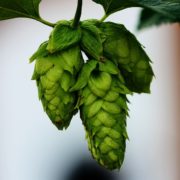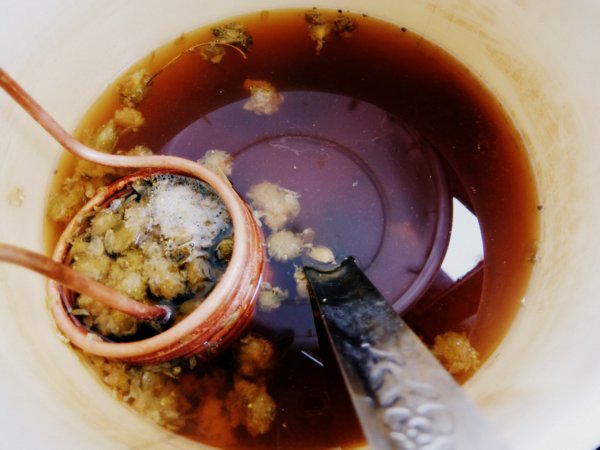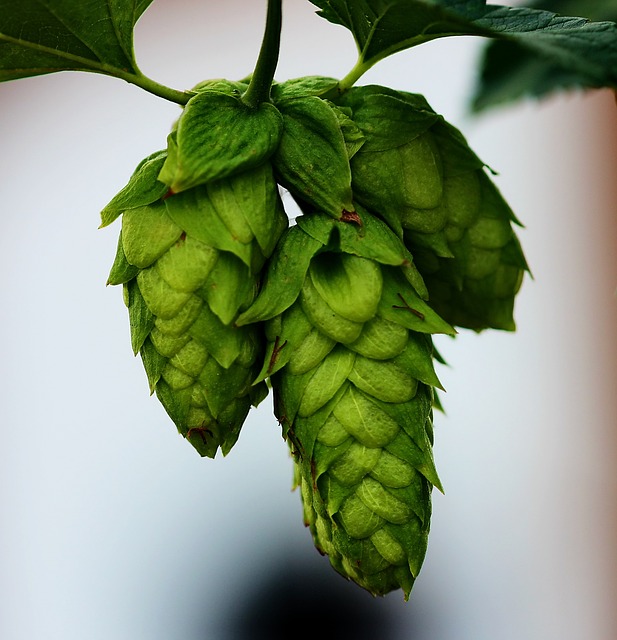Single Hop IPA Recipe To Evaluate Hop Varieties
There may not be a better way for the home brewer to learn and understand how each ingredient tastes and flavours a beer than by using it as the sole ingredient in a beer.
When considering hops to use in your recipes for instance, if you haven’t tasted them in a beer before, you often have to rely on the descriptions used to market them or other people’s experiences of brewing with them. You can go in search of commercial beers that use the hops you’re interested in but often those hops are used in conjunction with other varieties. That is why making something like a single hop IPA is such good idea. IPA’s are a great showcase for hops, I thoroughly recommend Mitch Steele’s book on IPA for a great in depth read on the style.
Test & Experiment
As homebrewers we have no commercial interest so brewing a beer solely to experiment with different varieties of hops is an advantage we have over our professional counterparts. We can brew experimental beers without the worry of having to sell them, we can make small batches and test multiple iterations of the same beer just by switching out one variety of hop for another.
At the present time there seems to be new varieties of hops released every year and until leaf hops are utilised in a beer the only information we have to go on is the descriptions released by hop merchants and breeding programs. These descriptions are intended to make a hop desirable to the brewer and can overemphasise some of the aromatic qualities.
One such hop I have brewed with is the recently released UK Endeavour which is described as a English version of Cascade, having used it myself it doesn’t quite match the aromatic punch of Cascade. The exercise of brewing with it though enables you to form your own opinions of ingredients rather than relying on generalities. From my usage of Endeavour for example I can see it working rather well in darker beers where its fruitiness would compliment the roasted notes from dark malts, instead of using it in a pale ale where it won’t quite meet up to the bold aromatic qualities of Cascade.
Single Hop IPA’s
So when picking a beer style to experiment with single hops there isn’t a much better choice than the contemporary US IPA. The grist of a modern IPA is almost the same no matter whose recipe you look at, with a few tweaks here and there.
90 – 97% Pale Malt
3 – 10% Pale Crystal malts such as Carapils
0 – 10% Munich/Vienna malt
It’s almost a boilerplate for all contemporary IPAs and that’s because it works, it allows the hops to take centre stage. Too higher portion of darker crystals can muddy the aroma of the hops and become cloying at higher ABV’s and a small percentage of base malts such as Vienna just adds a bit more of a backbone to carry the hop aroma on.
Of course there are tweaks you could make to the grain bill to make it your own. However, bear in mind that when you’re testing and experimenting with hop varieties. you want a clean foundation to work from and the more types of grain you add in, the more complex the beer becomes which can get in the way of analysing your hops qualities.
When calculating the hopping schedule for your beer it’s good to know what exactly you’re looking for from the variety of hops you are brewing with.
For example you may want to test the aroma qualities of a hop like Saaz. If this is the case then it is ok to bitter the beer with a neutral bittering hop such as Magnum. Trying to get to your desired level of IBUs with a variety that can be as low as 2-3% alpha acids means there will be a lot of plant matter swirling around in the boil.
Bittering with a neutral hop means you can save all of the aroma hops for the final additions and the bittering charge won’t affect the flavour in the finished beer. You won’t get vegetal off flavours from using masses of a single kind of hop throughout.
I also like to do this with hops that are expensive or in short supply. Using Citra as a bittering hop can feel like a waste when we all know how great it is as a finishing hop, using a less expensive bittering hop means you have more for your late additions.
The Recipe
So here I have my standard recipe for testing out hop varieties I like to make the bittering hop addition account for around 30 IBU and then stick to set weights for the aroma additions. Just substitute in whatever variety you are using.
Single Hop IPA - American IPA
================================================================================
Batch Size: 21 L
Boil Size: 23.984 L
Boil Time: 60.000 min
Efficiency: 70%
OG: 1.059
FG: 1.015
ABV: 5.8%
Bitterness: 31.9 IBUs (Tinseth)
Color: 6 SRM (Morey)
Fermentables
================================================================================
Name Type Amount Mashed Late Yield Color
Pale Malt (2 Row) UK Grain 5.200 kg Yes No 78% 3 L
Caramel/Crystal Malt - 10L Grain 50.000 g Yes No 75% 6 L
Munich Malt Grain 100.000 g Yes No 80% 9 L
Total grain: 5.350 kg
Hops
================================================================================
Name Amount Use Time Form IBU
Single Hop -30 IBU- Boil 60.000 min Leaf 30
Single Hop 15.000 g Boil 10.000 min Leaf
Single Hop 20.000 g Boil 5.000 min Leaf
Single Hop 50.000 g Boil 0.000 s Leaf
Single Hop 20.000 g Dry Hop 3.000 day Leaf
Yeast
================================================================================
Name Type Form Amount Stage
Safale S-05 Ale Dry 11.000 mL Primary
Mash
================================================================================
Name Type Amount Temp Target Time
Infusion 14.125 L 72.200 C 65.000 C 60.000 min
Final Batch Sparge Infusion 15.664 L 83.106 C 74.000 C 15.000 min






Hi,
I want to try out some single-hop ipa’s to get a feel of the taste of some different hops. This recipe looks good and i am thinking to follow an abrevation of this recipe, but i am not exactly certain about one little piece of the recipe. In the hop section it says:
Single Hop 50.000 g Boil 0.000 s Leaf
But i am not really sure how to implement this, since i am thinking what is meant here is: “at the end of the boil add 50g of hop”. But for how long? or is is added for the duration of the fermentation? Hope you can explain this, since i am a bit uncertain how to proceed.
Yes, add the 0.000s addition at the end of the boil. They just need to be in contact with the wort until it is cooled then all the hop leaf and debris can be removed before fermentation begins.